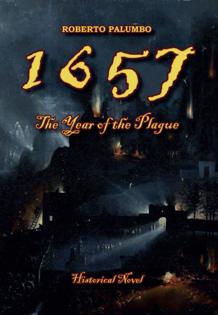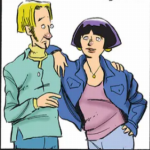A doctor’s fight for survival in 1657
Published in Mom's Advice
Roberto Palumbo’s immersive and haunting journey into "1657 The Year of the Plague" showcases the depths of human suffering and the resilience of mankind during one of Europe’s darkest chapters in history. Set in Genoa, this historical novel offers a staunch look at a city gripped by fear, despair, and the unrelenting force of death. At its heart is the story of Piero Argentieri, a skilled physician wrongfully accused of attempted murder, whose transformation from a prisoner to a reluctant hero forms the core of this deeply evocative tale.
The author masterfully blends historical accuracy with expressive storytelling, crafting a story that is both vivid and thought-provoking as readers are drawn into the chaos of a society on the brink of collapse, all while the protagonist grapples with themes of morality, identity, and survival in the face of unimaginable adversity.
From the opening courtroom scene, readers are plunged into a world teetering on the edge of chaos. The oppressive weight of fear and uncertainty is palpable, mirroring the societal breakdown as the bubonic plague ravages through Genoa. The author’s vivid and atmospheric prose captures every detail, from the stench of decay to the desperation of those clinging to life.
Genoa itself becomes a character in the story — a living, breathing entity transformed by the plague, and Roberto Palumbo uses the city’s disintegration to explore broader societal dynamics, illustrating how catastrophe strips away the veneer of civilization to reveal both the darkness and resilience within humanity.
At the center of this tumultuous world is Piero Argentieri, whose wrongful imprisonment sets the stage for his physical and emotional odyssey. Piero’s character is richly drawn, embodying the conflict between rationality and chaos. As a physician, he is a man of science and reason, but the world he faces forces him to confront the limits of his knowledge.
Piero’s journey is as much internal as it is external. His reflections on identity, guilt, and justice are deeply psychological, offering a complex and layered protagonist that is relatable and memorable. His relationships — with his brother Giovanni, the enigmatic Teá, and others — are equally multifaceted, revealing the varied ways people respond to crisis.
One of the novel’s most striking elements is its visceral portrayal of the bubonic plague. Through Piero’s eyes, readers witness the grotesque reality of a city overrun by disease: streets filled with the dead, gravediggers struggling to keep pace, and the pervasive stench of decay.
The imagery is unforgettable, driving home the stakes of survival in a world where death is omnipresent.
Piero’s role as a doctor becomes both a blessing and a burden, forcing him to confront the ethical dilemmas of saving lives in a world where resources are scarce, and death is inevitable. His alliances with other medical professionals, including the Capuchin friars, highlight the collective effort to combat the plague, even as society crumbles around them.
The novel also delves into the moral decay that often accompanies catastrophe. Roberto Palumbo’s depiction of a society unraveling under the weight of fear and desperation is both unsettling and thought-provoking. Yet, through Piero’s unwavering dedication to his patients and his determination to find meaning amidst the chaos, the story ultimately becomes one of hope and redemption.
Roberto Palumbo’s narrative structure is compelling, alternating between Piero’s internal struggles and the broader societal collapse. The mix of first-person and third-person perspectives heightens the emotional impact, drawing readers further into Piero’s world. The pacing is masterful, maintaining a sense of urgency as the plague spreads, while moments of reflection provide depth and nuance.
"1657 The Year of the Plague" is a powerful exploration of humanity’s capacity for resilience and hope in the face of overwhelming despair. Roberto Palumbo’s vivid prose, richly drawn characters, and haunting imagery create a narrative that lingers long after the final page.
Highly recommended for readers of historical fiction and those who seek a thought-provoking tale of resilience and redemption.










Comments